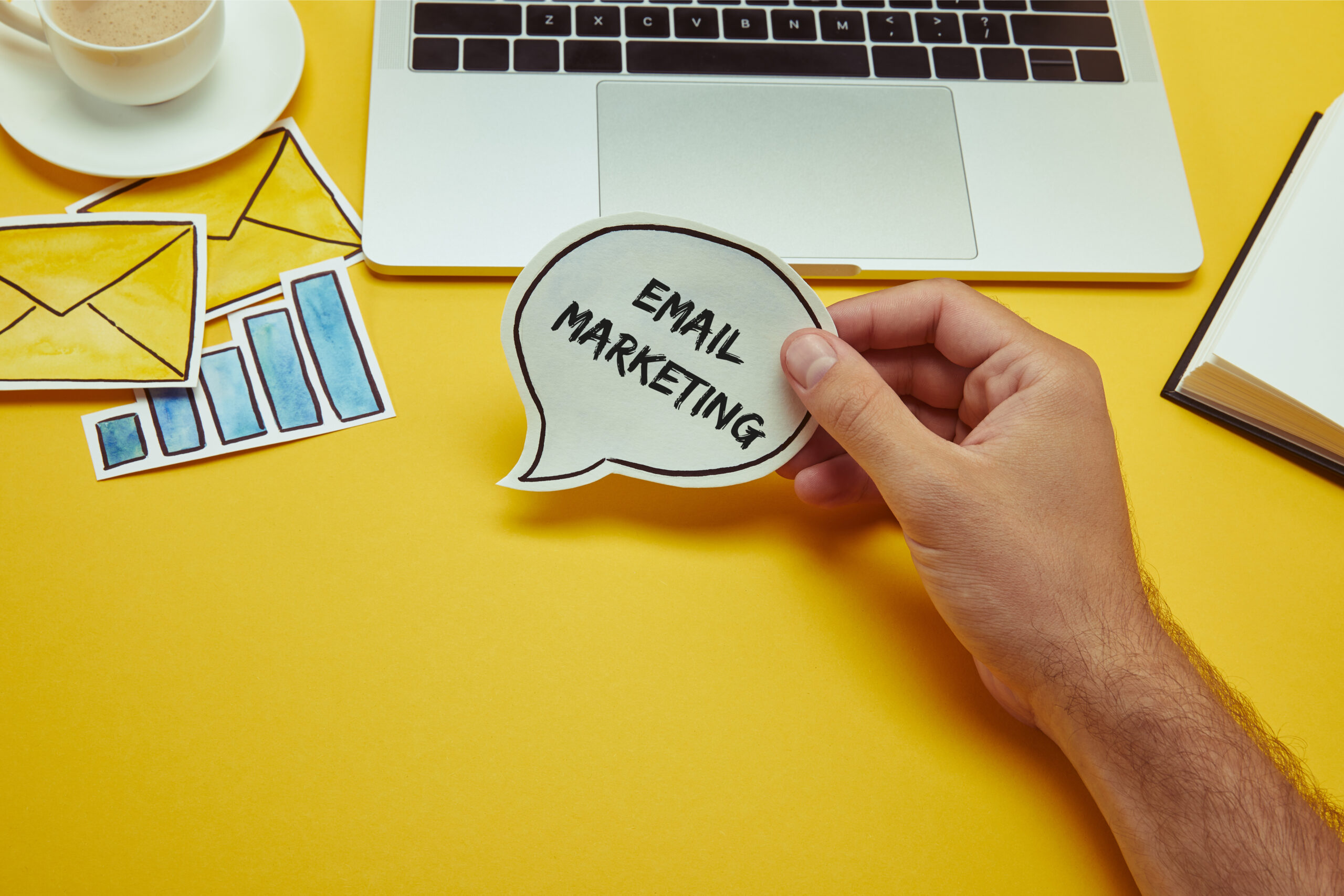Online Business
Maximize Engagement With Funny Emails in Email Marketing
Published
6 months agoon

Discover how to blend humor with funny emails marketing effectively. Learn to craft engaging subject lines and sign-offs that resonate with your audience, building stronger brand loyalty and memorable interactions.
The Magic of Funny Emails
Laughing matters a lot in email ads. It grabs folks’ attention, sticks in their minds, and makes them feel good about the brand. When you get the jokes just right, it’s like the brand becomes one of your pals, making your bond with the customers stronger.
How to Make Email Titles Chuckle-Worthy
To make email titles that crack people up, you have to be creative and really get who you’re talking to. A super funny email title can make someone want to click it open, boosting the chances they’ll read more.
Why Chucklesome Email Titles Work Wonders
If your email titles are a hoot, more people are going to open them. This means more folks chatting about your brand and thinking you’re cool. A funny email stands out in the crowded inbox, so it’s more likely to get a look-see.
Examples of Funny Emails Titles in the Wild
Checking out real examples of email titles that made people laugh can teach you a lot. These real-deal examples are great for sparking ideas for your catchy titles.
What Makes Jokes Tick in Email Ads
To get why jokes work in email ads, you need to know how different kinds of funny stuff affect people. It’s also key to understand how culture and the situation play a role in whether a joke hits the mark in your marketing messages.
Top Tips for Funny Emails Signatures
When you’re being funny in your email signatures, keep it professional and make sure the jokes fit your brand’s style. Stick to light and easy-to-get jokes, stay away from touchy subjects, and think about how different your readers are.
Making Your Email Goodbyes Stick with Humor
A funny way to say goodbye in your email can really stick in someone’s mind. But, be sure you know how the person you’re writing to feels about jokes that your funny goodbye fits the situation and how formal you are with them.
Adding Laughs to Business Chats
Dropping a joke in business talks can make things friendlier and lighten the mood. But it’s super important to think about cultural differences, what each person likes, and how formal your chat is supposed to be.
Also read: Simplified Guide to Email Sequences: Boost Your Business Marketing
Using Smileys and Fun Pictures in Emails
Emojis and funny pictures can make your emails more fun to look at and feel more friendly. But, use them carefully and make sure they match your brand’s look and what your reader likes.
Being Thoughtful with Jokes in Emails
When you’re using humor in emails, you need to be really careful to be inclusive, respectful, and mindful of different viewpoints. Avoid jokes that could be taken the wrong way or upset someone, and always think about the situation and who’s reading.
Wrapping Up: The Power of Email Marketing with a Smile
Alright, so email marketing is super strong for businesses to chat with their customers and make them stick around. Adding jokes in your email titles, goodbyes, and even in your signature can really grab attention and make your message stick. But remember, use those jokes wisely and pick the right time for them. A well-done email with a spot-on funny touch can leave a great mark on whoever reads it. But if the joke’s off, it might do just the opposite. At the end of the day, emails are still a top-notch way to market stuff, and businesses can really shine if they use it the right way.
You may like
-


Smart Layering: A Guide to Efficient Outdoor Clothing Management
-


North South Tech: Your Premier Choice for Web Development and Management Software Solution
-


Pets and plants in long distance moving
-


Exploring the Advantages of PVC Commercial Roofing
-


The Growing Demand for Greensboro IT Support: Navigating the Future of Technology Services
-


Choosing the Best Size for Your Powder Coating Booths
Online Business
Unleashing the Power of Professional Web Development and Hosting Services
Published
5 months agoon
February 15, 2024
In the ever-evolving landscape of the digital realm, having a strong online presence is not just a luxury but a necessity for businesses and individuals alike. As a Web Developer & Web Hosting Provider, we take pride in offering comprehensive solutions that go beyond the ordinary, ensuring a seamless and robust online experience for our clients.
With a wealth of expertise nurturing brick-and-mortar and digital enterprises, Desert Web Solutions presents all-encompassing solutions to seamlessly establish your online brand presence and elevate it into the spotlight!
Crafting Exceptional Websites with Expert Web Development
Elevating User Experience with Innovative Designs
Our commitment to excellence starts with our web development services. We understand that a website is often the first point of contact between a business and its audience. Hence, our expert team of developers focuses on creating visually stunning and functionally superior websites that captivate and engage visitors.
Embracing Responsive Design for a Mobile-First World
In an era where mobile devices dominate, we recognize the significance of responsive design. Our websites are meticulously crafted to adapt seamlessly to various screen sizes, ensuring a consistent and enjoyable user experience across devices. This not only enhances user satisfaction but also contributes positively to search engine rankings.
Optimizing for Speed and Performance
Website speed is a critical factor in user satisfaction and SEO rankings. We employ cutting-edge technologies and optimization techniques to ensure our websites load swiftly, providing visitors with instant access to information. This commitment to speed is not just about user experience but also about meeting the criteria that search engines value for ranking.
Robust Web Hosting: The Backbone of a Successful Online Presence
Unparalleled Hosting Infrastructure
As a leading Web Hosting Provider, our commitment to reliability is unwavering. Our hosting infrastructure is built on state-of-the-art servers, ensuring optimal performance and minimal downtime. This robust foundation is crucial for maintaining a website’s availability, a factor that search engines consider when determining rankings.
Scalability for Growing Businesses
We understand that businesses evolve, and so should their online presence. Our hosting services are designed to be scalable, accommodating the growth of our clients seamlessly. This scalability not only future-proofs their online ventures but also aligns with search engine algorithms that favor websites capable of handling increasing traffic and data.
Security Measures Beyond the Standard
In an era where cyber threats are prevalent, we prioritize the security of our clients’ websites. Our hosting services come with advanced security measures, including firewalls, regular backups, and SSL certificates. A secure website is not only a trust signal for visitors but also a criterion highly valued by search engines.
The Intersection of Web Development and Hosting Excellence
Synergy for Optimal Performance
What sets us apart is the seamless synergy between our web development and hosting services. This integrated approach ensures that our clients receive a holistic solution, optimizing every aspect of their online presence. This cohesion not only enhances user experience but also aligns with search engine algorithms that appreciate well-rounded and comprehensive websites.
Conclusion
In the dynamic digital landscape, where every click matters, choosing the right Web Developer & Web Hosting Provider is crucial for success. Our commitment to excellence in web development and hosting services positions us as a formidable player in the industry. From visually striking websites to robust hosting infrastructure, we provide the tools that businesses and individuals need to thrive online.
Online Business
Simplified Guide to Email Sequences: Boost Your Business Marketing
Published
6 months agoon
January 20, 2024Discover how email sequences can enhance your business marketing. Learn about different types, tools for creation, and tips for success, all explained in simple terms. Perfect for boosting leads and sales!
Understanding Email Sequences
An email sequence is like a chain of automated emails sent to people like potential customers, actual users, or existing customers. These emails are set up to be sent based on certain rules, like after a set amount of time or when someone does something specific. The main goal of these emails is to make a good relationship with the receiver, help them get more interested, and eventually convince them to buy something or take some action. Email sequences can be of different types, like for welcoming new people, teaching new customers about your product, keeping potential customers interested, getting back old customers, or reminding people about stuff they wanted to buy but didn’t.
Why Email Sequences are Great for Marketing
Using email sequences in your marketing plan can be really beneficial. They can make more people buy things, get you more potential customers, and make your email marketing strategies better by testing different versions. By setting up these emails to send automatically, businesses can save time and effort while still giving their audience emails that feel personal and relevant. Plus, these sequences are great for building long-lasting relationships with customers and making them want to keep coming back.
Different Kinds of Email Sequences and What They Do
There are various kinds of email sequences, each with a specific purpose. Welcome sequences are for saying hello to new email subscribers and giving them good info about your brand. Onboarding sequences help new customers start using your product or service. Lead nurturing sequences are all about creating a bond with potential customers and nudging them towards buying. Re-engagement sequences aim to get back customers who haven’t been active lately. Abandoned cart sequences remind people about things they added to their cart but didn’t buy, trying to get them to finish their purchase.
How to Make a Good Email Sequence
To create a good email sequence, first pick the right email sequence tool. Then, set clear and achievable goals, plan out each sequence, create content that people will find valuable, write an eye-catching subject line and pre-header, include a call-to-action (CTA), and keep testing different versions of your emails. Remember to always think about your audience and give them content that they find useful and interesting.
Tips for Writing Email Sequences
When writing email sequences, keep a few things in mind. First, set clear goals for each sequence and make sure your emails fit these goals. Second, the content should be valuable and relevant to your audience. Third, your subject line and pre-header should catch the reader’s attention. Fourth, include a clear CTA that tells your audience what to do next. Lastly, regularly test and tweak your emails to make them work better.
ALSO READ: Growth and Improvement: The Power of Maturity Assessments in Organizations
Real-World Email Sequence Success Stories
Lots of email sequences have done really well. For instance, Hubspot made $100,000 in just a month with their emails. They sent these emails to people who were thinking about buying their product but hadn’t yet. The emails gave useful info and nudged people to buy. Other great examples are the welcome emails from Airbnb and the emails Dropbox sends to help new users get started.
Tools for Making Email Sequences
There are a bunch of tools and software to help you create email sequences. Hubspot, GetResponse, Freshmarketer, and Moosend are some of them. These platforms are easy to use, let you set up automated emails quickly, personalize your messages, and test different versions to see what works best.
Testing Your Emails for the Best Results
A/B testing is super important to make your email sequences as good as they can be. This means trying out different versions of your emails to see which ones people like more. You can test things like the subject line, the small text at the beginning, what the email says, the call-to-action (CTA), and when you send them.
Mixing Email Sequences with Your Marketing Plan
It’s important to make sure your email sequences work well with the rest of your marketing. This means lining them up with your business goals and using them alongside other things like social media and blog posts. Doing this creates a strong, well-rounded marketing strategy that talks to your audience in many ways.
Figuring Out If Your Emails Are Working
To see if your email sequences are doing their job, you need to look at things like how many people open them, click on links inside, actually do what you’re asking them to, and how much money you’re making from them. This info helps you understand which emails are great and which ones might need some changes.
In Summary: The Power of Email Sequences
Email sequences are really useful for businesses that want to get more leads, make more sales, and be better at email and sales marketing. By automating these emails, businesses save time and still send messages that really speak to their audience. There are different kinds of email sequences for different goals: welcoming, helping new customers, keeping potential customers interested, reconnecting with customers who’ve lost interest, and reminding people about things they wanted to buy.
To make a good email sequence, pick the best platform for it, set clear goals, plan each sequence, create content that people will find helpful, write an eye-catching subject line and small intro, include a CTA, and keep testing your emails. By integrating these sequences into your overall marketing and tracking how well they do with analytics and metrics, you can keep improving them.
Successful examples include Hubspot’s big-money sequence, Airbnb’s welcoming emails, and Dropbox’s helpful guide for new users. By sticking to good practices and continuously testing and improving, businesses can create a marketing approach that really connects with their audience in many ways.
Online Business
3 Best Free Email Marketing Tools and Services Lookinglion
Published
7 months agoon
December 16, 2023
Today, many businesses use email to talk to customers. It’s a really good way, even for small businesses like Lookinglion. But sometimes, it costs a lot to start. Good news! There are 3 Best Free Email Marketing Tools and Services Lookinglion. They help you begin without spending any money.
If You Need a Quick Short Answer, Here It Is:
Email marketing is a great way for businesses, including small ones like Lookinglion, to talk to their customers. You can start this for free using tools like Mailchimp, SendinBlue, and HubSpot Email Marketing. These tools help you create and send emails, organize your email lists, and even make your emails look nice on phones. To grow your list, offer cool things in exchange for email sign-ups, use your website and social media smartly, and keep your sign-up process easy. Remember to listen to your audience and change your emails to what they like. This way, Lookinglion can build a big email list without spending a lot of money at the start.
Choosing 3 Best Free Email Marketing Tools and Services Lookinglion
Before picking a tool, Lookinglion needs to think about a few things. What do you want to do with your emails? How many people are you sending emails to? Are you okay with using tech stuff? Knowing what’s important to you helps you pick the right free tool.
3 Best Free Email Marketing Tools and Services Lookinglion:
- Mailchimp: Mailchimp is super popular for free email marketing. It’s easy to use, lets you drag and drop to make emails, and has a big free plan. You can send 10,000 emails a month to 2,000 people. It’s great for starting your email list and simple campaigns. Mailchimp even helps you make web pages and websites, so it’s really good for beginners.
- Good Stuff:
- Easy to use
- Drag-and-drop email making
- Big free plan
- Helps make web pages and websites
- Things to Think About:
- Not as many features as paid plans
- Email designs might be simple
- SendinBlue: If you’re worried about your emails getting to people, SendinBlue is great. Its free plan lets you send 300 emails a day and helps make sure people open and click your emails. It also has some tools for making web pages and sending text messages. Plus, it’s good at automating emails.
- Good Stuff:
- Emails get to people well
- The free plan has web page-making, text messages, and simple automation
- Easy to use
- Things to Think About:
- Can only send a few emails each day for free
- Automation might be too simple for big campaigns
- HubSpot Email Marketing: If you want to mix email marketing with other tools like CRM, HubSpot Email Marketing is a good free choice. Their free plan lets you send 2,000 emails a month. It works well with HubSpot’s free CRM, so you can organize your audience, make personal emails, and see how well your emails do.
- Good Stuff:
- Works with HubSpot CRM and other tools
- Good at organizing and personalizing emails
- Easy to use
- Things to Think About:
- Can’t send many emails for free
- Need a HubSpot account for all features
Beyond the Free Tier: Growing Your Email Marketing
When your email list gets bigger, and you want to do more, you might need to pay for more features. The free tools are a great start, but paid plans have more stuff, like better automation and detailed reports, and you can send more emails.
Here’s how to move from free to paid:
- Figure out what you need that’s not in the free plan.
- Look at different paid plans to find what’s best for your money and needs.
- Start with a small plan and go bigger as you need more.
Give Cool Free Stuff:
Offer things like free guides, special discounts, or a sneak peek at new products if people give you their email addresses. Make sure these gifts are something your customers really like, and tell them why it’s great to sign up.
Use Your Website Smartly:
Put sign-up forms in places on your website where people will see them, like the main page, blog posts, or special pages. You can use pop-ups, too, but they shouldn’t be annoying. They should give something good to your visitors.
Team Up with Other Businesses:
Find other businesses that don’t compete with you and agree to tell each other’s customers about your email lists. This way, you can reach more people.
Talk About It on Social Media:
Tell people on your social media about your email list. You can have special content or fun contests for people who sign up. Ask your followers to share your message with their friends, too.
Also read: Azur Lane Tier List: Easy Guide for Everyone
Have Fun Contests:
Create exciting contests or giveaways where people need to sign up with their email to join. This can make people excited and quickly add more people to your list.
Connect with Other Tools You Use:
If you use tools like CRM for your business, make them work together with your email tool. This way, you can automatically get email addresses from different places.
Make Signing Up Easy:
Keep your sign-up form simple. Just ask for basic things like their name and email. You can ask for more information later.
Double Check Sign-Ups:
Use a system where people have to confirm they want your emails. It makes sure you get real and interested people on your list.
Keep Checking and Improving:
Always look at how people are signing up for your emails and see what works best. Keep changing your methods to get even more people to join your email list.
With these steps, Lookinglion can make a big and great email list using the 3 best free email marketing tools and services. It’s all about getting more people interested and making it easy for them to join.
Split Your Audience into Groups:
When you use the 3 best free email marketing tools and services, Lookinglion, it’s good to divide your email list into smaller bunches. You can do this by what people like, how old they are, or what they buy. It helps you write emails that are just right for each group.
Tell Great Stories:
Everyone loves a good story! Use stories to make a strong connection with your audience. You can talk about other customers, show how your products help in real life, and make a community feel around your brand.
Try Different Types of Emails:
Don’t always send the same kind of email. Mix it up with updates about your products, peeks into what happens behind the scenes, helpful tips, or even emails with videos. It keeps things interesting for your readers.
Make Emails Look Good on Phones:
Most people read emails on their phones, so make sure your emails look good on small screens. Use clear pictures, short text, and big buttons so it’s easy to click on things.
Make Your Emails Personal:
Use more than just the person’s name to make your emails feel special. Change your emails based on what each person likes, what they’ve bought before, or how they’ve talked to you in the past.
Use Tools to Send Emails Automatically:
Some tools help send emails by themselves when certain things happen, like when someone buys something. It makes your job easier and makes sure people get emails that matter to them at the right time.
Test and See What Works Best:
Try out different things in your emails, like changing the title, the way it looks, or the buttons you use. It is called A/B testing, and it helps you find out what your readers like best.
Keep Track of How Your Emails Do:
Pay attention to things like how many people open your emails and click on links. This information helps you understand what’s working well and what you need to change.
Connect Your Emails with Other Ways You Market:
Don’t just focus on email by itself. Link your email campaigns with other things you do, like social media, ads, or blog posts. It helps create a full experience and gets better results everywhere.
Listen to Feedback and Change When Needed:
Always listen to what your readers say. You can ask them directly, read their comments, or see what they say on social media. Use their thoughts to make your emails better and more interesting.
Conclusion:
Email marketing is really useful for all businesses. With a good free email marketing tool, Lookinglion can start without spending much. As you grow, think about paid plans to do even more with your emails and reach your business dreams.

Smart Layering: A Guide to Efficient Outdoor Clothing Management

North South Tech: Your Premier Choice for Web Development and Management Software Solution

Pets and plants in long distance moving

yt.be Activate: Activating YouTube with yt.be

Finance and Maneuver in Business

